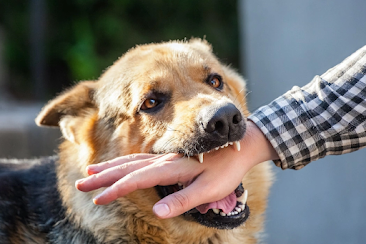Rabies in Dogs: Causes, Symptoms, and Prevention
RabRabies is one of the most dreaded infectious diseases in human history. Once rabies symptoms appear, both animals and humans, even if bitten by an infected animal, will quickly die in pain and panic. Therefore, proactive prevention through vaccination is essential.
What Is Rabies? According to the World Health Organization (WHO), rabies is a viral disease that almost always leads to death once clinical symptoms appear. Approximately 99% of rabies cases in humans are transmitted by domestic dogs.
Currently, there is no effective treatment for rabies once clinical signs appear. However, the disease can be prevented through pre-exposure or post-exposure rabies vaccination.
Causes of Rabies According to the WHO report, rabies is prevalent worldwide. This disease causes the death of 60,000 to 70,000 people and millions of animals every year. Rabies is an extremely dangerous disease; once contracted, it results in 100% mortality for both bitten humans and animals. However, many people are still unaware of the disease, leading to complacency or incorrect treatment, posing a danger to lives.
Rabies is caused by the rabies virus, a member of the Lyssavirus genus within the Rhabdoviridae family. The virus is present in the saliva of infected animals. Infected animals can transmit rabies to other animals or humans through bites. In some cases, rabies can also be transmitted through contact with saliva on open wounds or mucous membranes, such as the eyes and nose. For example, if an animal infected with rabies licks an open wound on your skin, you may become infected. There are two strains of the rabies virus:
- Street Virus: This strain of rabies virus is found in animals that have been infected naturally.
- Fixed Virus: This strain has a fixed incubation period on rabbits.
Additionally, there are other risk factors for contracting rabies in humans, such as:
- Living in or traveling to underdeveloped countries where rabies is common, including countries in Africa and Southeast Asia.
- Engaging in activities involving contact with wild animals carrying the rabies virus, such as exploring caves with a high bat population or camping in areas with abundant wild animal activity.
- Working in environments with a high risk of exposure to rabies, such as laboratory workers, veterinarians, or wildlife handlers.
Symptoms of Rabies Rabies presents in two main forms: encephalitic (affecting the brain) and paralytic (affecting the nerves and muscles).
Encephalitic Form: The initial symptoms include fever, headache, fatigue, and loss of appetite, along with restlessness and anxiety. Subsequently, hydrophobia (fear of water) and aerophobia (fear of drafts of air) develop. As the disease progresses, patients become incapable of swallowing, resulting in excessive drooling. The patient's pupils will dilate, leading to a bright, sparkling, "spangled" appearance in the eyes. Muscle spasms, convulsions, and spontaneous ejaculation or urination occur. Death rapidly ensues.
Paralytic Form: In this form, paralysis spreads from the extremities to the trunk, including respiratory muscles. The patient will eventually die due to respiratory failure.
In some cases, individuals who have been bitten by dogs may develop symptoms due to an intense fear of rabies. They may exhibit unusual behaviors, actions, and sounds. These are known as "pseudo-rabies" cases. In reality, rabies victims remain fully aware until death and do not exhibit madness.
How Does Rabies Spread? Rabies is transmitted through contact with the saliva of an infected animal, primarily through biting or licking. The natural reservoir of the rabies virus typically consists of warm-blooded animals, especially dogs. The virus has also been found in cats, raccoons, bats, and other mammals.
Once the virus enters the body, it infiltrates the peripheral nervous system and travels along nerves to the spinal cord and brain. Each day, the virus advances approximately 12-24 mm. Upon reaching the brain, clinical signs become apparent.
The incubation period for rabies can be less than one week or more than one year, depending on factors such as the amount of virus introduced, the severity of the wound, the distance from the wound to the central nervous system, and more. The closer the wound is to the central nervous system, such as the face, neck, head, fingers, and external genitalia, the shorter the incubation period.
Is Rabies Transmitted from Human to Human? Although rare, the medical field has documented cases of rabies transmission directly from human to human. The risk of human-to-human transmission is mainly through damaged skin or mucous membranes and the shared use of items contaminated with the saliva of a rabies-infected person. However, human-to-human transmission is not common, primarily occurring in cases of organ transplants.
Can Rabies Be Contracted through Ingestion? To date, there is no scientific evidence that rabies can be contracted by humans through the consumption of milk or the consumption of cooked animal meat. However, individuals working as professional livestock butchers may be at risk of infection when slaughtering rabies-infected animals and handling brain or other infected organs.
Is Being Bitten by a Dog Equivalent to Having Rabies? Being bitten by a dog does not automatically mean you have rabies. The risk of contracting rabies depends on various factors, including whether the dog is infected with rabies, the amount of virus in the dog's saliva, the depth of the wound, timely and appropriate wound hygiene, and post-exposure vaccination. Post-exposure rabies vaccination immediately after a dog bite remains the most effective preventative measure.
Step 1: Clean the Wound:
- Separate your clothing from the wound. If the bite occurs on your leg, you can use scissors to remove the fabric from the bite site, which helps limit the
- Wash the wound with running water for at least 15 minutes, using lukewarm water if possible. Afterward, cleanse the wound thoroughly with 70% alcohol, iod
Step 2: Dress the Wound:
- After
Step 3: Seek Vaccination:
- Go to the nearest healthcare facility for rabies post-ex
Prevention is critical in the case of rabies. Both human and animal lives can be saved





0 Nhận xét